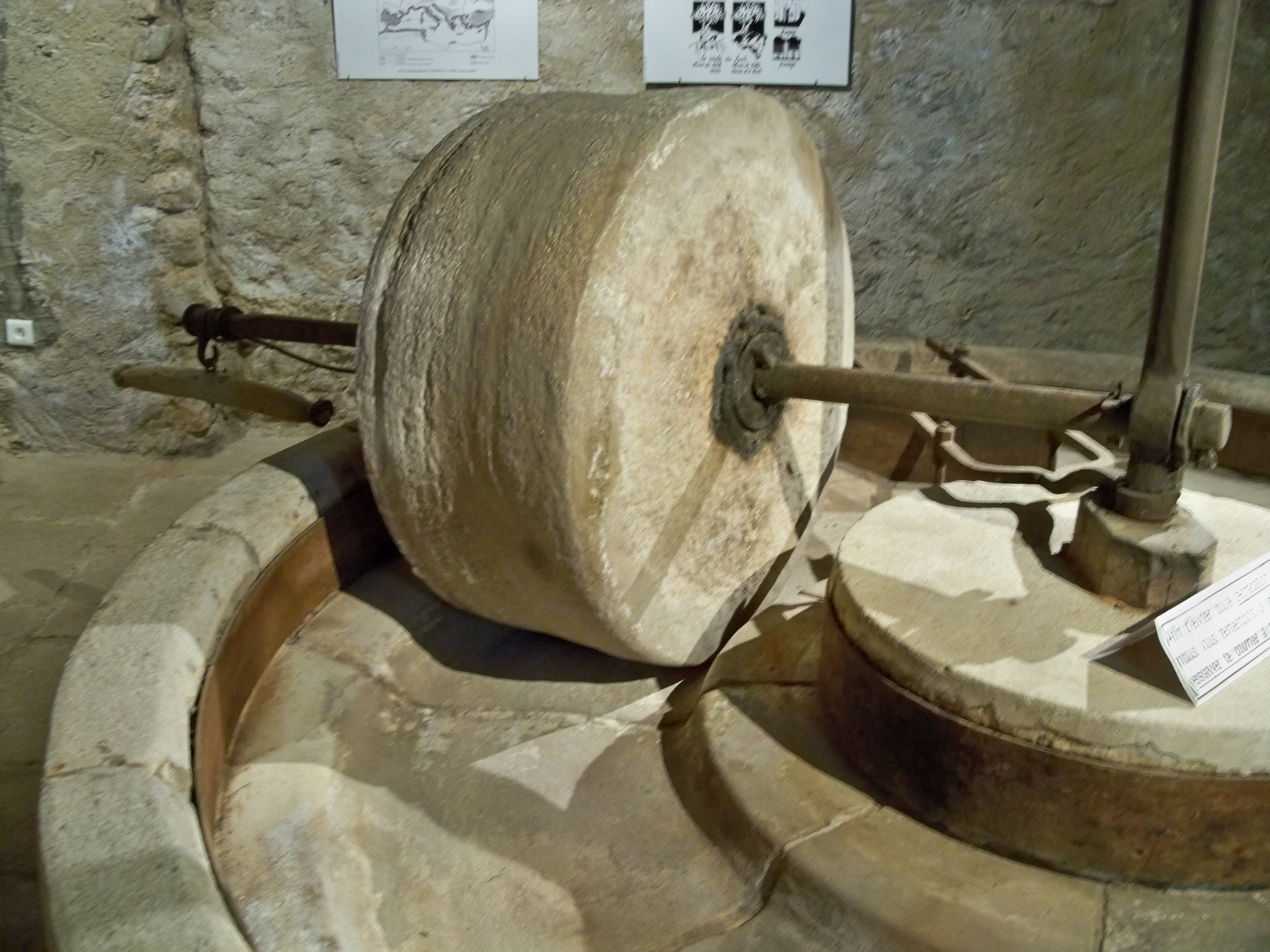|
Olive Oil Acidity
Olive oil contains small amounts of free fatty acids (meaning not attached to other fatty acids in the form of a triglyceride). Free acidity is an important parameter that defines the quality of olive oil. It is usually expressed as a percentage of oleic acid (the main fatty acid present in olive oil) in the oil. As defined by the European Commission regulation No. 2568/91 and subsequent amendments, the highest quality olive oil (extra-virgin olive oil) must feature a free acidity lower than 0.8%. Virgin olive oil is characterized by acidity between 0.8% and 2%, while lampante olive oil (a low quality oil that is not edible) features a free acidity higher than 2%. The increase of free acidity in olive oil is due to free fatty acids that are released from triglycerides. Free fatty acids formation The presence of free fatty acids in olive oil is caused by a reaction (lipolysis) started when lipolytic enzymes (that are normally present in the pulp and seed cells of the olive) come ... [...More Info...] [...Related Items...] OR: [Wikipedia] [Google] [Baidu] |
Rustrel - Meule 2
Rustrel (; ) is a commune in the Vaucluse department in the Provence-Alpes-Côte d'Azur region of Southeastern France. In 2017, it had a population of 688. Sights This village is famous for its ochre, which many people come to visit in the ''French Colorado''. See also *Communes of the Vaucluse department *Luberon The Luberon ( or ; Provençal dialect, Provençal: ''Leberon'' or ''Leberoun'' ) is a massif in central Provence in Southern France, part of the French Prealps. It has a maximum elevation of and an area of about . It is composed of three mounta ... References Communes of Vaucluse {{Vaucluse-geo-stub ... [...More Info...] [...Related Items...] OR: [Wikipedia] [Google] [Baidu] |
Vegetable Oils
Vegetable oils, or vegetable fats, are oils extracted from seeds or from other parts of edible plants. Like animal fats, vegetable fats are ''mixtures'' of triglycerides. Soybean oil, grape seed oil, and cocoa butter are examples of seed oils, or fats from seeds. Olive oil, palm oil, and rice bran oil are examples of fats from other parts of plants. In common usage, vegetable ''oil'' may refer exclusively to vegetable fats which are liquid at room temperature. Vegetable oils are usually edible. History In antiquity Olive oil has been a part of human culture for millennia.Ruth Schuster (December 17, 2014). "8,000-year old olive oil found in Galilee, earliest known in world", ''Haaretz''. Retrieved December 17, 2014. Archaeological evidence shows that olives were turned into olive oil by 6000 BC and 4500 BC in present-day Israel. Pagnol, p. 19, says the 6th millennium in Jericho, but cites no source. In ancient Egypt, plant oils including cedar oil, cypress oil, and ol ... [...More Info...] [...Related Items...] OR: [Wikipedia] [Google] [Baidu] |
Cuvette
In laboratories, a cuvette () is a small tube-like container with straight sides and a circular or square cross-section. It is sealed at one end, and made of a clear, transparent material such as plastic, glass, or fused quartz. Cuvettes are designed to hold samples for spectroscopic measurement, where a beam of light is passed through the sample within the cuvette to measure the absorbance, transmittance, fluorescence intensity, fluorescence polarization, or fluorescence lifetime of the sample. This measurement is done with a spectrophotometer. Overview Traditional ultraviolet–visible spectroscopy or fluorescence spectroscopy uses samples that are liquid. Often the sample is a solution, with the substance of interest dissolved within. The sample is placed in a cuvette and the cuvette is placed in a spectrophotometer for testing. The cuvette can be made of any material that is transparent in the range of wavelengths used in the test. The smallest cuvettes can hold 70&n ... [...More Info...] [...Related Items...] OR: [Wikipedia] [Google] [Baidu] |
Absorbance
Absorbance is defined as "the logarithm of the ratio of incident to transmitted radiant power through a sample (excluding the effects on cell walls)". Alternatively, for samples which scatter light, absorbance may be defined as "the negative logarithm of one minus absorptance, as measured on a uniform sample". The term is used in many technical areas to quantify the results of an experimental measurement. While the term has its origin in quantifying the absorption of light, it is often entangled with quantification of light which is "lost" to a detector system through other mechanisms. What these uses of the term tend to have in common is that they refer to a logarithm of the ratio of a quantity of light incident on a sample or material to that which is detected after the light has interacted with the sample. The term absorption refers to the physical process of absorbing light, while absorbance does not always measure only absorption; it may measure attenuation (of transmitted ... [...More Info...] [...Related Items...] OR: [Wikipedia] [Google] [Baidu] |
Near-infrared Spectroscopy
Near-infrared spectroscopy (NIRS) is a spectroscopic method that uses the near-infrared region of the electromagnetic spectrum (from 780 nm to 2500 nm). Typical applications include medical and physiological diagnostics and research including blood sugar, pulse oximetry, functional neuroimaging, sports medicine, elite sports training, ergonomics, rehabilitation, neonatal research, brain computer interface, urology (bladder contraction), and neurology (neurovascular coupling). There are also applications in other areas as well such as pharmaceutical, food and agrochemical quality control, atmospheric chemistry, combustion propagation. Theory Near-infrared spectroscopy is based on molecular overtone and combination vibrations. Overtones and combinations exhibit lower intensity compared to the fundamental, as a result, the molar absorptivity in the near-IR region is typically quite small. (NIR absorption bands are typically 10–100 times weaker than the corresponding fun ... [...More Info...] [...Related Items...] OR: [Wikipedia] [Google] [Baidu] |
Oil Mill
An oil mill is a grinding mill designed to crush or bruise oil-bearing seeds, such as linseed or peanuts, or other oil-rich vegetable material, such as olives or the fruit of the oil palm, which can then be pressed to extract vegetable oils, which may be used as foods or for cooking, as oleochemical feedstocks, as lubricants, or as biofuels. The pomace or press cake – the remaining solid material from which the oil has been extracted – may also be used as a food or fertilizer. History Oil-rich vegetable materials have been processed mechanically to extract the valuable oils for thousands of years, typically using vertical millstones moving around a central post (edge runner stones or kollergangs in an edge mill) to crush or bruise the seeds or fruit which can then be stamped or pressed to extract the oil. A treadmill, windmill or watermill was later used to drive the milling and pressing machinery, replaced in modern times with steam and later other power sources. B ... [...More Info...] [...Related Items...] OR: [Wikipedia] [Google] [Baidu] |
Potassium Hydroxide
Potassium hydroxide is an inorganic compound with the formula K OH, and is commonly called caustic potash. Along with sodium hydroxide (NaOH), KOH is a prototypical strong base. It has many industrial and niche applications, most of which utilize its caustic nature and its reactivity toward acids. An estimated 700,000 to 800,000 tonnes were produced in 2005. KOH is noteworthy as the precursor to most soft and liquid soaps, as well as numerous potassium-containing chemicals. It is a white solid that is dangerously corrosive. Properties and structure KOH exhibits high thermal stability. Because of this high stability and relatively low melting point, it is often melt-cast as pellets or rods, forms that have low surface area and convenient handling properties. These pellets become tacky in air because KOH is hygroscopic. Most commercial samples are ca. 90% pure, the remainder being water and carbonates. Its dissolution in water is strongly exothermic. Concentrated aqueous ... [...More Info...] [...Related Items...] OR: [Wikipedia] [Google] [Baidu] |
Molar Concentration
Molar concentration (also called amount-of-substance concentration or molarity) is the number of moles of solute per liter of solution. Specifically, It is a measure of the concentration of a chemical species, in particular, of a solute in a solution, in terms of amount of substance per unit volume of solution. In chemistry, the most commonly used unit for molarity is the number of moles per liter, having the unit symbol mol/L or mol/ dm3 (1000 mol/ m3) in SI units. Molar concentration is often depicted with square brackets around the substance of interest; for example with the hydronium ion 3O+= 4.57 x 10-9 mol/L. Definition Molar concentration or molarity is most commonly expressed in units of moles of solute per litre of solution. For use in broader applications, it is defined as amount of substance of solute per unit volume of solution, or per unit volume available to the species, represented by lowercase c: :c = \frac = \frac = \frac. Here, n is the amount of the so ... [...More Info...] [...Related Items...] OR: [Wikipedia] [Google] [Baidu] |
Phenolphthalein
Phenolphthalein ( ) is a chemical compound with the chemical formula, formula carbon, C20hydrogen, H14oxygen, O4 and is often written as "HIn", "HPh", "phph" or simply "Ph" in shorthand notation. Phenolphthalein is often used as an indicator in acid–base titrations. For this application, it turns colorless in acidic solutions and pink in base (chemistry), basic solutions. It belongs to the class of dyes known as phthalein dyes. Phenolphthalein is slightly soluble in water and usually is dissolved in Alcohol (chemistry), alcohols in experiments. It is a weak acid, which can lose Hydrogen ion, H+ ions in solution. The nonionized phenolphthalein molecule is colorless and the double deprotonated phenolphthalein ion is Fuchsia (color), fuchsia. Further proton loss in higher pH occurs slowly and leads to a colorless form. Phenolphthalein ion in concentrated sulfuric acid is orange red due to sulfonation. Uses pH indicator Phenolphthalein's common use is as an indicator in acid-ba ... [...More Info...] [...Related Items...] OR: [Wikipedia] [Google] [Baidu] |
Methanol
Methanol (also called methyl alcohol and wood spirit, amongst other names) is an organic chemical compound and the simplest aliphatic Alcohol (chemistry), alcohol, with the chemical formula (a methyl group linked to a hydroxyl group, often abbreviated as MeOH). It is a light, Volatility (chemistry), volatile, colorless and flammable liquid with a distinctive alcoholic odor similar to that of ethanol (potable alcohol), but is more acutely toxic than the latter. Methanol acquired the name wood alcohol because it was once produced through destructive distillation of wood. Today, methanol is mainly produced industrially by hydrogenation of carbon monoxide. Methanol consists of a methyl group linked to a polar hydroxyl group. With more than 20 million tons produced annually, it is used as a Precursor (chemistry), precursor to other commodity chemicals, including formaldehyde, acetic acid, methyl tert-butyl ether, methyl ''tert''-butyl ether, methyl benzoate, anisole, peroxyacids, ... [...More Info...] [...Related Items...] OR: [Wikipedia] [Google] [Baidu] |
Diethyl Ether
Diethyl ether, or simply ether, is an organic compound with the chemical formula , sometimes abbreviated as . It is a colourless, highly Volatility (chemistry), volatile, sweet-smelling ("ethereal odour"), extremely flammable liquid. It belongs to the ether class of organic compounds. It is a common solvent and was formerly used as a general anesthetic. Production Most diethyl ether is produced as a byproduct of the vapor-phase Hydration reaction, hydration of ethylene to make ethanol. This process uses solid-supported phosphoric acid Catalysis, catalysts and can be adjusted to make more ether if the need arises: Vapor-phase Dehydration reaction, dehydration of ethanol over some Aluminium oxide, alumina catalysts can give diethyl ether yields of up to 95%. : Diethyl ether can be prepared both in laboratories and on an industrial scale by the acid ether synthesis. Uses The dominant use of diethyl ether is as a solvent. One particular application is in the production of cell ... [...More Info...] [...Related Items...] OR: [Wikipedia] [Google] [Baidu] |







